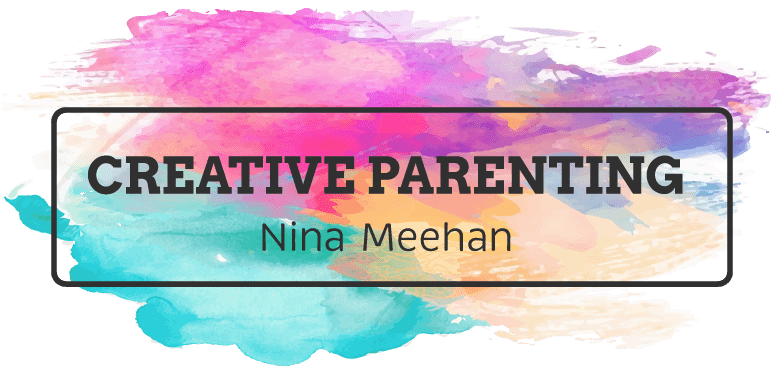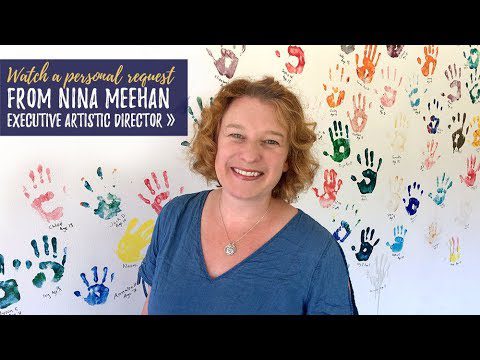As a part of the Morning Lazziness series about empowering women who are encouraging and doing incredible things with their ideas in society, I had the pleasure of interviewing Nina Meehan.
Nina Meehan is the founder of Creative Parenting a new method of parenting that infuses traditional parenting techniques with imaginative thinking to embrace and re-learn skills that will unleash that spirit in you and your children resulting in a deeper connection to make the hard moments easier, and the routine moments more joyous for the whole family. Creativity makes many stressful moments less bumpy and enhances your ability to have meaningful moments of connection.
Her work focuses on nurturing innovation in children and connecting people in our increasingly digital world.
How do you normally begin your mornings?
I really enjoy beginning my mornings with a workout. I like waking up before everyone else in my home wakes up, throwing on my workout clothes and going for a walk, doing yoga, lifting weights, and doing some cardio. I like to listen to music while I work out. If I do this, it is a palpable difference in how I approach the whole day. I am more optimistic, more engaged, and less stressed!
How did you manage to stay productive during lockdowns?
Well, some days I didn’t. Some days it was an effort to just get out of bed and keep the kids doing what they needed to do and keep my organization running. But, on the days that I did feel productive, it was usually because I had set really specific intentions around what and WHY I wanted to get certain things done. Also, connecting with nature was super important for me to stay productive.
How do you think the Pandemic has impacted children with the new mode of home-schooling?
The Pandemic was rough on all of us, but kids got hit particularly hard. Remote learning was incredibly difficult because it was asking kids to remove some of the essential learning tools they have–watching how others behave, socializing, engaging in hands-on activities, and working as a group. For many kids, being physically active at lunch, recess, and PE is the only way they make it through the school day because sitting still is so hard; remote learning does not have opportunities for that kind of kinesthetic integration. Other kids (this was me as a child) get through their school day because of art and music class, but the arts were the first thing to go when we moved to remote learning. There were silver linings for some kids–zoom learning turned out to be a really great thing for kids who had been dealing with bullying at school, and all of a sudden had a respite where they could focus on academics only. The bottom line, no two kids had the exact same experience, but all kids were lifted out of their normal routines and asked to re-learn everything they knew about the school and that will have a profound and lasting impact.
What motivated you to kick start the platform ‘Creative Parenting’?
Creative Parenting was born out of my 20 years as a theatre artist and arts educator and my own experience as a parent to three kids (6, 10, and 14). I realized in watching my friends and talking to the parents in the Bay Area Children’s Theatre community that parents were really struggling with the day to day of raising kids and that I had tools that I had learned and honed through my work that I often pulled out in my own home. I wanted to share that toolkit that works so well with my kids and with the hundreds of thousands of children I have taught and inspired through Bay Area Children’s Theatre interactive productions with other parents.
What is Creative parenting?
Creative Parenting is a mindset that teaches you how to make the hard moments easier and the routine moments joyous.
It is an approach to parenting that can fill your home with spontaneity, imagination, laughter, fun, and empathy.
Using the modalities of music, movement, storytelling, visual arts, and games, Creative Parenting gives parents tools to engage with their children in totally new and delightful ways.
What are the key programs you render through Creative Parenting?
- Creative Parenting Podcast
- Creative Parenting Workshops
- Creative Parenting Speaker Series
What are some initiatives that you hope to launch this year?
I am looking to increase in-person activities–specifically, I want to increase the number of Creative Family Nights I offer and increase speaking engagements.
What are some creative ways for children to engage in visual art activities that can reduce overall stress levels in the home?
Visual arts are terrific tools to help children express their feelings.
One of the aspects of Creative Parenting is that it gives kids room to say what they are feeling in a mode of communication that is not necessarily just words. So, for instance, if you have a child that is struggling with sadness, you can ask them what color is their sad and then encourage them to paint their sad. Give them free rein to create whatever they want. Show them how to mix colors to get a lighter and darker version of whatever color their sadness is. Once they have finished their painting, ask them open-ended questions about it. This is a great way to have a child open up about how they are feeling instead of bottling it up, which can then later come out in ways that cause stress and strife.
How do stress levels affect children? Are they more common in teenagers? What is your opinion?
Children are 100% affected by stress–both their own and the stress that is around them. They are little sponges, so if there is stress in their household, they will take it on as their own. The challenge is that stress looks very different in children than it does in adults, and children don’t necessarily know how to name what they are experiencing. Different ages might react differently. For instance, a four-year-old might regress and become very clingy or want to sleep in a parent’s bed at night. An elementary-age child might start acting very defiant and give you a lot of “NOs” even though they are normally an agreeable child. And a teenager will likely pull into themselves and focus on their friends instead of going to you for any help with stress. Teenagers definitely experience a TON of stress because they are at an age when they start having to take on responsibilities, and they start to understand that their actions could have bigger long-term consequences. And all of that is hitting them just as their hormones are exploding, and they really don’t have control over how their minds and bodies will respond at any given moment.
The more we as parents can remember back to our own childhoods and teenage years and find that empathy for how much of a lack of control these kids feel, the easier it will be to find sympathetic and supportive language to help them with their stress.
How can parents increase the sense of bonding between the family members?
Creative Play is a terrific way to create connection. When we create together, it’s like a shortcut for our minds to bonding. In theatre, we talk about the importance of ensemble…the ensemble tells a story together, and that ensemble becomes deeply connected to each other…the kind of connection where you don’t even have to talk in order to communicate what needs to happen. A family is the same way; if they create together, they become their own ensemble, working together seamlessly and from joy. Creative play is also impossible to do without being present with each other; your mind is on the task at hand and the people doing that task with you. There is no room for the other 30 million things you would normally be thinking about. And, in the end, that is what your child wants more than anything, your undivided attention. So, use the ultimate mindfulness hack–Creative Play!
How can parents boost their children’s cognitive ability?
We so often mistake “cognitive ability” with “knowing stuff.” But, there are so many dimensions of cognitive ability. Seeing many different solutions to one problem, social and emotional learning, cooperation and collaboration, just to name a few. Creative Play addresses all of these other dimensions of cognitive development. We want our kids to be able to think with elasticity and a growth mindset. The Creative Process does not have a right or a wrong answer, the outcome unfolds as we create it, so it allows for exploration. We can also allow our children to experience the joy of mistakes and failure through creative play. Life is an endless opportunity to fail, learn and start again, and that is the same cycle as the creative process. But, if we focus on the narrow idea of cognitive development–can my child add 2+2–we will miss out on all the gifts that open-ended creative exploration can give to a child. This could take the form of building a robot out of cardboard or a dance party that is themed with animal movements, or a story game creating a new imaginary world!
Lastly, what do you think this world needs the most?
I think the world needs innovative thinkers that are open to all possibilities instead of trapped in the binary of “right vs. wrong” or “this vs. that.” I see the easiest path to innovative thinking as embracing creative play as part of our daily lives–for both us adults and our children.




